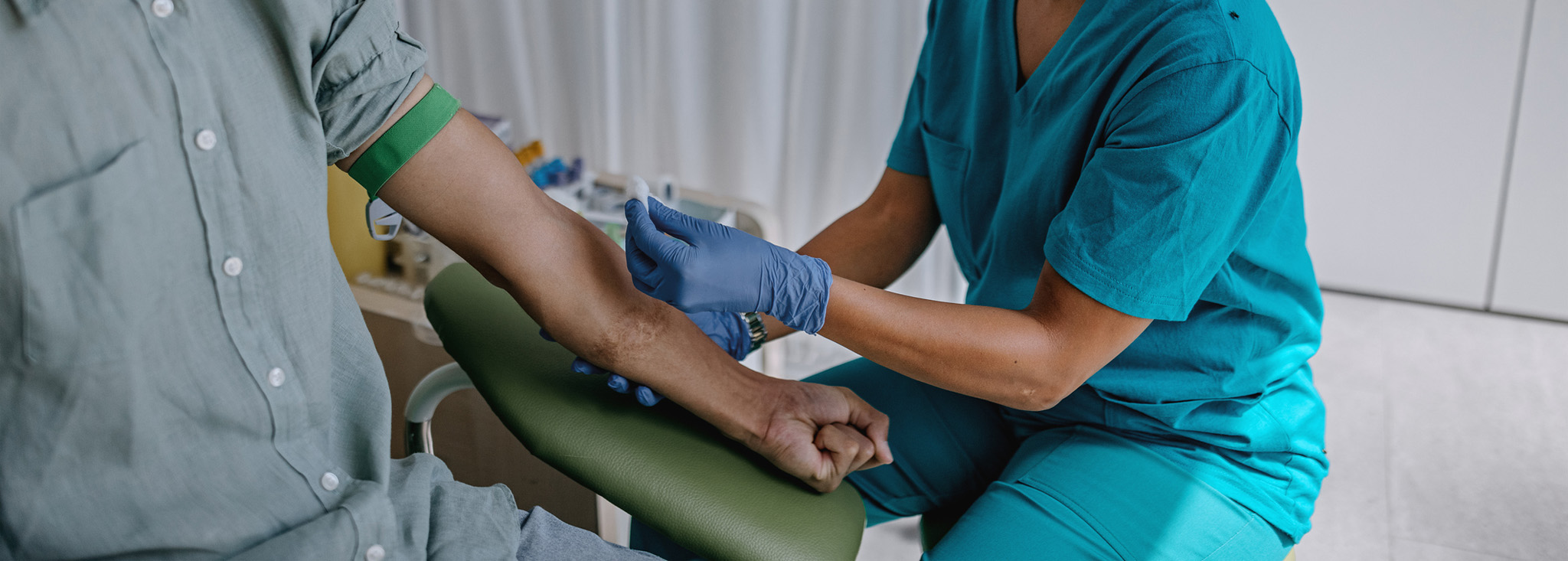Eye Complications
Written by: Alicia McAuliffe-Fogarty, PhD, CPsychol
10 minute read
December 13, 2020
Diabetic eye disease, also known as retinopathy, is one of the most well-known complications of diabetes, people with diabetes often fear this complication, but the good news is there are many effective treatments now.
Diabetic eye disease, also known as retinopathy, is one of the most well-known complications of diabetes. People with diabetes (PWD) often fear this complication the most1, but the good news is there are many effective treatments now. And, getting annual dilated eye exams, with an ophthalmologist or optometrist, can greatly reduce the chances of having issues with vision (unlike 20 years ago). In addition, there are other eye issues people with diabetes are more at risk for that make it important to get regular comprehensive eye exams including diabetic macular edema, cataracts and glaucoma.
Facts
- From 2000 to 2010, the number of cases of diabetic retinopathy increased 89 percent from 4.06 million to 7.69 million in the U.S.5
- In 2010 U.S. prevalence rates for diabetic retinopathy were 51 percent female and 49 percent male.5
- Globally, the number of people with diabetic retinopathy will grow from 415 million in 2015 to 642 million by 2040.6
- Diabetic macular edema affects 21 million people worldwide, including 28 percent of people with type 2 diabetes and 12 percent of people with type 1 diabetes.7,8
- From 2010 to 2050, the number of Americans with diabetic retinopathy is expected to nearly double, from 7.7 million to 14.6 million. Hispanic Americans are expected to see the greatest increase in cases, rising more than three-fold from 1.2 million to 5.3 million.5
- Glaucoma affects 3 million people in the United States and is a leading cause of irreversible blindness.
- Glaucoma is 15 times more likely to cause blindness in African Americans than in Caucasians and the prevalence of glaucoma rises rapidly in Hispanics over the age of 65.9
- In 2010 among people age 75 and older, 19 percent of Hispanic Americans had the disease, compared with 7 percent of Blacks and whites.5
- The WHO reported cataracts that were not operated on (51 percent of the causes of blindness) and glaucoma (8 percent of the causes of blindness) as the leading causes of avoidable blindness. Diabetic retinopathy accounted for 1 percent.6
Diabetic Retinopathy
Diabetic retinopathy (DR), a microvascular complication of diabetes, is caused by chronic hyperglycemia (high blood glucose), metabolic abnormalities (chemical reactions in your body) and genetics. This causes changes in the eye including the formation of microaneurysms (areas of swelling in small blood vessels that look like small air bubbles), weakness in the small vessel walls, damage to the tiny blood vessels walls and loss of cells that line the small blood vessels (extramural pericytes). In early stages, most people do not have any symptoms.
Dr. Arjun Sood, MD is a retina specialist at the Cincinnati Eye Institute and said, “the major risk factors for developing diabetic retinopathy are how long you have had the disease, poor sugar control (elevated HbA1C levels) and high blood pressure.” Regular eye screenings are important—catching retinopathy can lead to early treatment and prevent long-term issues.”
Stages of Diabetic Retinopathy
Non-proliferative diabetic retinopathy (NPDR)—Microaneurysms (small areas of swelling, like air bubbles, in the retina’s tiny blood vessels). As the NPDR progresses, more blood vessels become affected and may swell and lead to a loss of blood flow to the retina. In response, the retina starts to secrete chemicals for new vessels to grow.
Proliferative diabetic retinopathy (PDR)—At this advanced stage, the retina started to secret chemicals for new vessels to grow. These grow along the inside surface of the retina and into the fluid that fills the eye. These new blood vessels are fragile, which makes them more likely to leak and bleed. This may cause scar tissue to contract and cause retinal detachment—the pulling away of the retina from underlying tissue, like wallpaper peeling away from a wall. Retinal detachment can lead to permanent vision loss.
Diabetic Macular Edema
Diabetic macular edema (DME) can occur at any stage of diabetic retinopathy and is the buildup of fluid in the area at the back of the eye near the center of the retina called the macula. This fluid causes the macula to swell and become thicker, altering vision. Diabetic macular edema doesn’t typically have symptoms until the disease is very progressed.
Treatment for Diabetic Retinopathy and Diabetic Macular Edema
- More frequent regular eye exams with a retinal specialist (these are scheduled based on severity and progression of the eye disease and other health factors)
- Improve glycemic management to keep glucose in range (3.9-10.0 mmol/L70-180 mg/dL); A1C <7%
- This can reduce the risk of:
- Progression of retinopathy by 75 percent
- Any macular edema by 58 percent
- Laser treatment by 52 percent
- This can reduce the risk of:
- Improve blood pressure management
- This can reduce the risk of:
- Progression of DR by 34 percent
- Moderate vision loss by 47 percent
- Laser treatment by 35 percent
- This can reduce the risk of:
- Manage cholesterol
- Manage kidney disease
- Stop smoking
Medicine and Surgical Treatments Diabetic Retinopathy and Diabetic Macular Edema
Anti-VEGF treatment (Anti-vascular endothelial growth factor therapy): Medicines that are injected into the eye and are used as first-line treatment for diabetic macular edema. This decreases the severity of diabetic retinopathy and diabetic macular edema and also improve vision.
Steroids (corticosteroids): These can be either injected into the eye or are implanted (sustained-release). They are used for diabetic macular edema as second-line therapy.
Panretinal photocoagulation (PRP): A laser procedure that treats abnormal blood vessels to make them shrink and disappear in proliferative diabetic retinopathy. This reduces the risk of visionless by 50 percent.
Vitrectomy: A surgical procedure to remove the gel in the eye (vitreous humor gel). This allows access to the retina for additional treatments including repair of retinal detachment and removal of vitreous hemorrhage (bleeding).
Glaucoma
The fluid inside the eye (aqueous humor) usually flows out of the eye through a channel. If the drainage channel is blocked or there is increased resistance, pressure can build up (intraocular pressure). This increasing pressure can result in blindness without treatment. There are two types of glaucoma—open-angle and closed-angle which refers to the structure of the drainage system. The most common form in the United States is the open-angle form and is three to four times more common in African Americans than in non-Hispanic Whites. Most people do not have symptoms or pain so screening for glaucoma with regular eye exams is important.
Dr. Shalini Sood-Mendiratta at Cole Eye Institute at the Cleveland Clinic explains, “The risk factors for glaucoma include age, family history, thinner corneas and the larger appearance of the optic nerve. Other risk factors are diabetes, high myopia (or near-sightedness), eye surgery or injury, high blood pressure and use of corticosteroids like eye drops, pills, inhalers and ointments.”
Treatment for Glaucoma
Treatment of glaucoma includes medications typically consisting of eye drops, laser treatments, and, in more severe cases surgery. There are different types of eye drops and lasers that are used for treatment. The most common laser for open-angle glaucoma is selective laser trabeculoplasty (SLT). Dr. Sood-Mendiratta commented “SLT can often be used as a first line treatment in some patients to avoid the need for chronic drops and is a very safe and effective treatment for glaucoma. Patients need to understand that this is a chronic disease that we control with treatment but cannot cure or reverse damage that has already occurred.” Other treatments include a dissolvable implant with medicine that helps to reduce pressure in the eye.
Surgeries include minimally invasive glaucoma procedures and more traditional invasive surgeries. The more invasive surgeries bypass the natural eye drainage system and include trabeculectomy surgery that creates a flap to release fluid. Glaucoma drainage implants include a tube inserted into the front of the eye attached to a plate to drain the fluid. “There have been exciting advancements in the surgical treatment of glaucoma especially with regards to devices and procedures that can be done through smaller wounds, without stitches and are faster to perform and recover from after surgery” explains Dr. Sood-Mendiratta.
Cataracts
Cataracts are the result of the breakdown of protein in the eye and clumping together of the proteins causing a clouding of the lens of the eye (which is normally clear). This leads to decreased vision including blurry vision, colors may look faded, double vision, halos around light, trouble seeing at night and issues with bright lights.
People with diabetes are more likely to develop this condition than people without diabetes. PWD tend to get them at a younger age and have them progress faster. Other risk factors include steroid use, UV exposure, smoking, eye trauma or surgery and genetics.
Types of cataracts include nuclear sclerosis, cortical cataracts, posterior capsular cataract and others. These names refer to the layers or appearance of the cataract. Below are two examples of types seen more commonly in patients with diabetes.
Treatment of Cataracts
At early stages using brighter lights at home and work, wearing anti-glare sunglasses, and magnifying lenses for reading may be helpful. In addition, a new pair of glasses or contact lens prescription may also help. But if a cataract is affecting vision and quality of life, surgery is an option. This involves removing the clouded lens of the eye and replacing it with a clear artificial lens (intraocular lens). Cataract surgery is the most effective and most common procedure performed in all of medicine with 3 million Americans choosing to have cataract surgery each year, and an overall success rate of 97 percent or higher when performed in appropriate settings.12
Prevention of Eye Diseases
When people begin to experience some eye issues, they may have symptoms. But in diabetic retinopathy and macular edema, both can rapidly damage the eye and lead to complete blindness without any symptoms. That is why screening with a regular comprehensive eye exam is important. Most patients do not have symptoms until diabetic macular edema and/or proliferative diabetic retinopathy are already present (the eye disease has progressed).
The American Diabetes Association (ADA) and the American Academy of Ophthalmology (AAO) recommends a comprehensive dilated eye exam for:
- Type 1—within five years of diagnosis
- Type 2—yearly dilated eye examination
- Pregnant patients—prior to conception, each trimester, and within three months after delivery
The comprehensive eye exam includes:
- Your medical history to determine vision difficulties, presence of diabetes and other general health concerns that may be affecting vision
- Visual acuity measurements to determine if and/or how much your vision has been affected
- Refraction test to figure out if a new eyeglass prescription is needed
- Evaluation of other parts of your eye, including the retina through a dilated pupil
- Measurement of the pressure within the eye
Fundus photography (Teleretinal Screening) is a camera that takes a picture of the interior surface of the eye to screen for retinopathy.
Optical Coherence Tomography (OCT) is a different type of camera that takes a two-dimensional picture of the cross-sections in the eye, similar to an ultrasound to diagnose diabetic macular edema.
Fluorescein angiography is a diagnostic procedure recommended to follow the course of a disease and to monitor treatment results in DR and DME. Before the procedure fluorescein dye is injected into a vein in the arm/hand. A special camera is used to record the blood flow in the retina as the dye passes through the blood vessels of the eye. This can show abnormal blood vessels or damage to the lining underneath the retina.
Psychosocial Impact of Diabetic Retinopathy3,4
As people with diabetes, we know how devastating a new or progressing medical condition is, so it’s not surprising that being diagnosed with diabetic retinopathy and living with DR affects other aspects of your life—your emotions, thoughts, social interactions, family, work and the list goes on. Research has also has shown that diabetic retinopathy and vision loss have several debilitating effects, including:
- Disruption of family functioning—relationships and roles
- Increased social isolation and dependence on other people
- Deterioration of work prospects resulting in increased financial strain
- Fear
- Anxiety
- Vulnerability
- Guilt
- Loss of confidence
- Anger
- Stress
- Self-perception issues
In addition, quality of life (QOL) is impacted in people with retinal diseases, including2:
- Difficulty in performing important day-to-day activities
- Facing emotional and psychological challenges
- Struggle with social interactions
- Having a myriad of ocular and visual symptoms
- Concerns about health, disease outcomes and personal safety
- Problems with mobility and orientation
- Inconveniences associated with an eye condition
- Coping with the eye condition
If you have any diabetes and complications, you may want to get some extra support to help you cope. Many people have difficulty with the news of a diabetes eye complication or that one is progressing. They often need extra support adjusting to their new normal. Talk to your diabetes health care provider about how you are feeling and your worries. They can recommend some practical tips for adjusting to your new norm and also refer you to a mental health provider that has experience in helping patients deal with diabetes complications. Taking care of yourself both medically and psychologically can help improve your overall quality of life.
1. T1D Exchange My Glu
2. Prem Senthil M, Khadka J, Gilhotra JS, Simon S, Peludos K. Exploring the quality of life issues in people with retinal diseases: a qualitative study. J Patient Rep Outcomes. 2017;1(1):15. doi:10.1186/s41687-017-0023-4
3. Fenwick EK, Pesudovs K, Rees G, et al. The impact of diabetic retinopathy: understanding the patient’s perspective. British Journal of Ophthalmology 2011;95:774-782.
4. Fenwick, E., Rees, G., Pesudovs, K., Dirani, M., Kawasaki, R., Wong, T.Y. and Lamoureux, E. (2012), Social and emotional impact of diabetic retinopathy: a review. Clinical & Experimental Ophthalmology, 40: 27-38. doi:10.1111/j.1442-9071.2011.02599.x
5. https://www.nei.nih.gov/learn-about-eye-health/resources-for-health-educators/eye-health-data-and-statistics/diabetic-retinopathy-data-and-statistics
6. https://www.who.int/blindness/data_maps/VIFACTSHEETGLODAT2010full.pdf?ua=1
7. Leasher JL, et al. Global Estimates on the Number of People Blind or Visually Impaired by Diabetic Retinopathy: A Meta-Analysis from 1990 to 2010. Diabetes Care. 2016;39:1643-9.
8. Romero-Aroca P. Managing diabetic macular edema: The leading cause of diabetes blindness. World J Diabetes. 2011;2(6):98-104. doi:10.4239/wjd.v2.i6.98.
9.https://www.brightfocus.org/sources-glaucoma-facts-figures
10. https://eyewiki.org/w/images/1/c/c9/Anterior_subcapsular_cataract.jpg
11. https://eyewiki.org/w/images/1/6/65/Diabetic_Snowflake.jpeg
12. https://eyewiki.org/Cataract
Educational content related to diabetes complications is made possible with support from Allergan, an active partner of Beyond Type 1 at the time of publication. Editorial control rests solely on Beyond Type 1.

Author
Alicia McAuliffe-Fogarty, PhD, CPsychol
Beyond Type 1 is the largest diabetes org online, funding advocacy, education and cure research. Find industry news, inspirational stories and practical help. Join the 1M+ strong community and discover what it means to #LiveBeyond a diabetes diagnosis.




